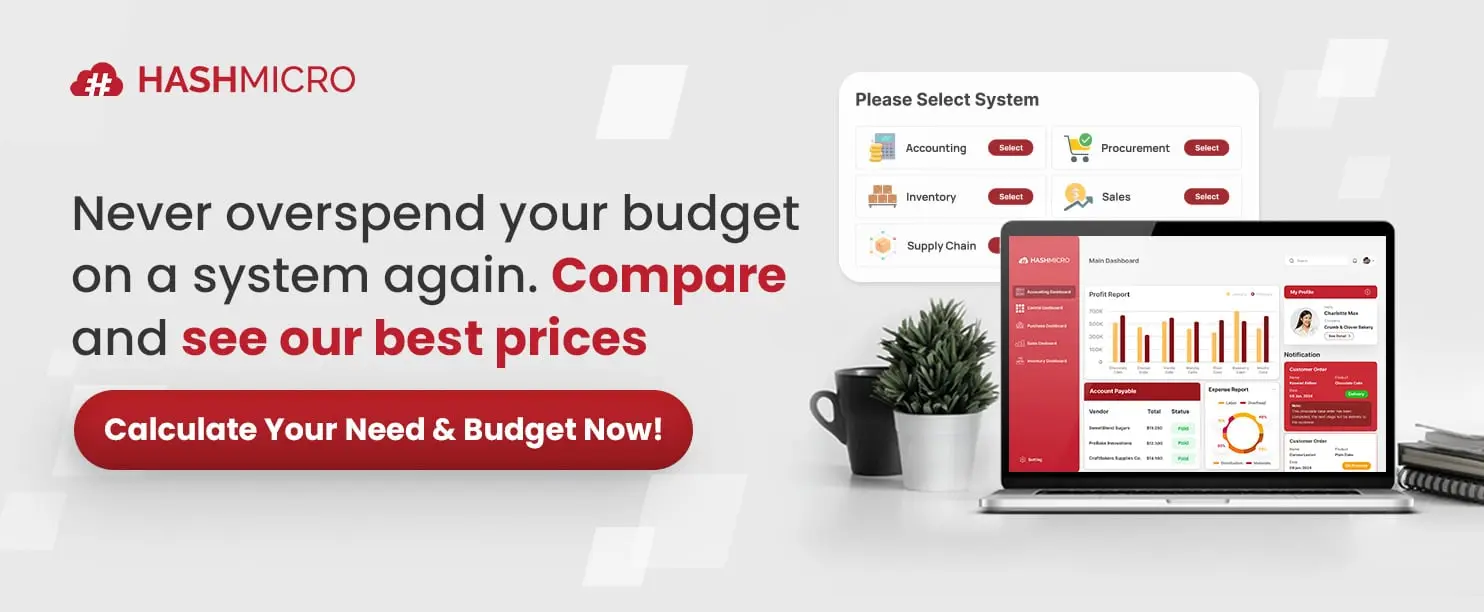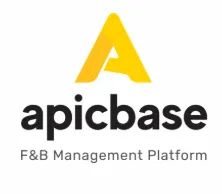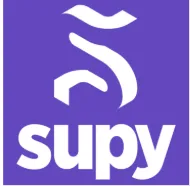Do you know that restaurants in Malaysia discard up to 17,000 tonnes of food daily, with 24% of it still edible and considered avoidable waste? One reason this issue occurs is inventory mismanagement.
To avoid this problem, businesses in Malaysia could use central kitchen software. The introduction of this technology has become a game-changer, addressing critical issues like inventory discrepancies, subpar food quality, and unnecessary waste.
However, with the numerous kitchen management system options available, how does a business owner in Malaysia navigate the crowded marketplace to find the central kitchen software that meets their specific needs?
The decision is crucial, as the right software can prevent the problems above, ensuring optimal inventory levels, consistent food quality, and minimal waste.
This article serves as a comprehensive guide, offering insights and comparisons of the best central kitchen software in Malaysia to help you determine which will best suit your business’s requirements.
With this information, you can make an informed choice, ensuring your central kitchen operates at peak efficiency and your culinary creations meet the highest standards.
Table of Content
Content Lists
Key Takeaways
|

Shortlisted Best Central Kitchen Management System
Based on my research, the following are shortlisted as the best central kitchen management systems that excel in efficiency, scalability, and ease of integration. these solutions have been carefully evaluated for their ability to streamline operations, improve inventory control, and enhance overall productivity.
Best because
The best end-to-end solution for all types of business needs
Best Because
Goods transfer, cost control, and optimized inventory.
Best Because
Efficient goods transfer, cost control, and optimized inventory.
Best Because
Manages production plan, stock transfers, and vendor collab.
Best Because
Improve communication between the front house.
Best Because
Focuses on enhancing internal supply chain operations.
Best Because
Applications to manage various business aspects.
What is Central Kitchen Software?
Central Kitchen Software is a specialized tool designed to streamline and manage the operations of a central kitchen, which supplies multiple outlets or locations with food and ingredients. It integrates various functions like inventory management, order processing, production planning, and distribution tracking into one platform. This allows businesses to efficiently manage their kitchen operations, ensuring that food production and supply are consistent across all branches or stores.
The software helps central kitchens optimize food production, reduce waste, and track real-time inventory levels, ensuring that ingredients are available when needed. It also enables managers to create production schedules, manage suppliers, and monitor the distribution of goods to different outlets. This centralization of data and processes leads to better coordination, reduced operational costs, and increased efficiency across the supply chain.
Hashy AI Fact

Need to know!
Hashy AI from HashMicro enables you to manage the central kitchen through a customizable ordering portal, track supplier and delivery management, and generate a central kitchen report.
Request a free demo today!
10 Recommended Central Kitchen Software in Malaysia
Now that you have learned about the importance of using central kitchen software for your business, you may be interested in finding the ideal solution for your specific needs.
In this section, we provide a curated list of the best central kitchen software providers in Malaysia for your reference.
- HashMicro: User-friendly, navigate, and utilize the system effectively.
- Melba: Recipe management, scheduling, and order organization.
- Restroworks: Goods transfer, cost control, and optimized inventory.
- Apicbase: Efficient goods transfer, cost control, and optimized inventory.
- Gofrugal: Manages production plan, stock transfers, and vendor collab.
- LS Retail’s: Improve communication between the front house.
- Supy: Focuses on enhancing internal supply chain operations.
- Inresto: Streamline operations in a central kitchen management system.
- Sharva: Integrates central kitchen and warehouse management.
- LINGA ROS: Applications to manage various business aspects.
1. HashMicro Central Kitchen Software
HashMicro is a robust and comprehensive solution trusted by over 1,750 world-class enterprises, including McDonald’s and Banban. It offers various modules and software solutions that cater to different business needs.
One of HashMicro’s business solutions is Central Kitchen Software. It is designed to be user-friendly, ensuring that even those with minimal technical expertise can navigate and utilize the system effectively. This is particularly beneficial for Malaysia’s diverse workforce.
The ability to customize features and integrate with existing systems makes this ERP software a versatile choice for Malaysian businesses looking to enhance their central kitchen operations.
HashMicro also offers a free demo, allowing you, the prospective client, to explore the features and modules available firsthand without any commitment.
Here’s how HashMicro’s Central Kitchen Software can benefit companies in Malaysia through its key features:
- Ordering portal: This portal streamlines customer ordering, ensuring effortless transactions and improved satisfaction for Malaysian businesses, as well as efficient order processing.
- Supplier management: The software tracks supplier contracts and inventory costs, enabling businesses to select optimal deals, which is crucial for cost control in Malaysia’s competitive market.
- Kitchen screen: Kitchen screens provide real-time updates for chefs, ensuring efficient food prep management, which is essential for prompt service in Malaysia’s bustling central kitchens.
- Delivery management: Efficient ingredient shipment tracking ensures quick delivery management, which is crucial for business success in Malaysia’s expansive market.
- Inventory management: The system automatically tracks stock, quality, and expiry, alerting users to low inventory levels to help Malaysian firms avoid shortages, minimize waste, and optimize costs.
- Central kitchen reports: The system’s reporting on kitchen operations, sales, and logistics, complete with analytics, empowers Malaysian businesses to make informed decisions, crucial for staying competitive in the food service sector.
| Pros | Cons |
|---|---|
|
|
Discover how HashMicro can revolutionize your inventory management and drive your success. Click the banner below to get the pricing scheme tailored to your business needs.

2. Melba Central Kitchen Management System
Software Melba is a management tool designed to optimize the operations of central kitchens, which are the hubs of food production for various dining establishments. Melba central kitchen software streamlines processes such as ingredient and recipe management, production scheduling, and order organization.
This central kitchen system enables centralized control over food production, helping to save time, reduce waste, and increase profit margins.
Here are the main features of Melba:
- Ingredient and recipe management: Create and manage ingredient and recipe databases to ensure uniform quality and standards across all outlets.
- Dynamic recipe data: Work with dynamic data that can be synchronized with multiple sales points.
- Production for multiple sales sites: Organize production by merging identical needs and dispatching finished products to various points of sale.
- Operational management: Optimize operations for supply to various sales sites.
- Inventory optimization: Manage stocks of ingredients, recipes, and drinks efficiently, and conduct inventory with precision.
- Supplier order placement: Place orders with suppliers directly through the software.
| Pros | Cons |
|---|---|
|
|
3. Restroworks Central Kitchen Management Software
Restroworks is designed to optimize the operations of a central kitchen, the core facility that prepares and supplies food to various dining locations. This central kitchen software ensures efficient goods transfer, cost control, and optimized inventory for a restaurant’s central kitchen and outlets.
Here are the key features of Retroworks:
- Inventory Management: Streamline inventory to minimize waste and enhance profitability.
- Recipe management: Accurate tracking of kitchen ingredients for waste reduction.
- Base kitchen: Centralized kitchen software to optimize operations.
- Kitchen Display System: Organize Kitchen Chaos with a Display System.
- Kitchen production system: A future-ready system to enhance kitchen productivity.
| Pros | Cons |
|---|---|
|
|
4. Apicbase Central Kitchen Management System
Apicbase is a comprehensive food and beverage (F&B) management platform designed to drive operational excellence across multi-site restaurant operations. It centralizes crucial food and beverage (F&B) data and provides insights into processes that impact profitability.
The central kitchen system aims to reduce staff and management workloads through automation, enabling businesses to increase profitability, enhance customer experience, grow sustainably, and ensure regulatory compliance.
Here are the core features:
- Menu engineering: A central hub for managing recipes, menus, and data group-wide.
- Production planning: Tools for planning production, generating Bills of Materials (BOMs), and monitoring execution.
- Inventory management: Capabilities to prevent waste and shortages and monitor stock levels at every location.
- Sales analytics: Analytics to identify top-performing and underperforming products, helping to develop profitable and popular items.
| Pros | Cons |
|---|---|
|
|
5. Gofrugal Central Kitchen Management System
Gofrugal is a management system designed to enhance the efficiency and profitability of central kitchen management system operations. It manages production planning, stock transfers, franchise management, waste reduction, and vendor collaboration.
Here are the main features:
- Franchise management: Ensure brand taste consistency across franchises with unified recipes.
- Menu engineering: Analyse sales and trends to refine menus and identify opportunities for cost savings.
- Vendor management: Centralise vendor data, streamline procurement, and monitor performance for supplier management.
- Wastage management: Minimise waste and maximise profits by tracking recipe ingredient utilisation and shelf life.
- Integrated accounts module: Simplify audits with an accounts module that ensures price consistency across restaurants.
| Pros | Cons |
|---|---|
|
|
6. LS Retail’s Central Kitchen Software
The LS central kitchen software is a comprehensive solution designed to optimise the operations of a central kitchen, which serves as the hub for food preparation and distribution for restaurants, cafes, and other food service establishments.
It’s part of the LS Retail suite of products and is specifically tailored to improve efficiency and communication between the front house (where customers are served) and the back house (where food is prepared).
Here are some key features of LS Retail’s central kitchen software:
- Kitchen Display System (KDS): Streamlines order organisation and recipe management, ensuring correct display sequencing at kitchen stations.
- Efficient workflow: Enhances workflow, links house areas, and facilitates consistent dish preparation according to guest specifications.
- Order management: A KDS enables kitchen staff to prioritise food preparation over ticket management, thereby enhancing customer service through faster and more precise order processing.
- Digital order viewing screens eliminate the need for printers and paper, directing POS orders directly to the corresponding prep stations.
| Pros | Cons |
|---|---|
|
|
7. Supy Central Kitchen Software Malaysia
Supy is designed to streamline operations for food and beverage businesses by enabling internal ordering and transfers between branches and the central kitchen.
This kitchen order management system focuses on enhancing internal supply chain operations, enabling businesses to manage their central kitchen’s production and distribution processes more effectively.
The key features of Supy’s central kitchen software are:
- Internal ordering: Enables branches to place orders with the central kitchen.
- Batch production and transfers: Enable mass production and bulk shipping.
- Dedicated central kitchen module: Offers a specialised module for central kitchen operations.
- Clear order statuses: Provides real-time updates on order statuses.
| Pros | Cons |
|---|---|
|
|
8. Inresto Kitchen Management System
Inresto is a specialised solution designed to manage and streamline operations in a central kitchen management system, which is the core facility for preparing and distributing food across various outlets of a restaurant chain or food service business.
The key features of Inresto include:
- Vendor management: Digitizes records and schedules vendors via texts.
- Inventory tracking: Offers real-time monitoring based on recipes and sub-recipes.
- Stock management: Automatically updates inventory status based on orders and sends notifications to manage stock levels effectively.
- Purchase order management: Generates and sends purchase orders to relevant vendors from the central kitchen.
| Pros | Cons |
|---|---|
|
|
9. Sharva POS Kitchen Management<
Sharva POS is a solution designed to help food service businesses manage and streamline their central kitchen management systems. It integrates central kitchen and warehouse management to cut costs and improve food production efficiency.
Here are the key features of Sharva POS:
- Inventory management: Automatically tracks low stock and generates POs for out-of-stock items.
- Vendor management: Manages vendor relationships and schedules deliveries.
- Quality and Safety Control: Maintains stricter control over food quality and kitchen hygiene.
- Consistency in food production: Ensures a consistent taste for customers’ favourite food items across different locations.
| Pros | Cons |
|---|---|
|
|
10. LINGA ROS Kitchen Management System<
LINGA ROS, which stands for Restaurant Operating System, is a comprehensive point-of-sale (POS) system designed for the restaurant and retail industry.
It’s a cloud-based central kitchen software that offers a suite of applications to manage various business aspects, including central kitchen operations.
Here are the key features of LINGA ROS:
- Cloud-based system: Ensure that updates and upgrades are automatic and that the system can adapt to the business’s changing needs.
- Inventory management: It provides real-time tracking of inventory levels, sets reorder points, and receives live updates on inventory shipments.
- Quality control: The software maintains high standards of food quality and safety.
- Order management: Streamlines the process of managing orders from different outlets.
| Pros | Cons |
|---|---|
|
|
Overall Comparison of Central Kitchen Management System in Malaysia
| Provider | Connection Quality | Bank Coverage | Ease of Integration | Data Enrichment |
|---|---|---|---|---|
| HashMicro | ||||
| Melba | ||||
| Restoworks | ||||
| Apicbase | ||||
| Gofrugal | ||||
| LS Retail | ||||
| Supy | ||||
| Inresto | ||||
| Sharva | ||||
| Linga ROS |
Who Uses Central Kitchen Software?
The central kitchen management system is a specialised platform designed to streamline operations in the central kitchen, which serves as the heart of food production for multiple restaurant outlets.
Central kitchen software is the backbone of many food-related businesses, streamlining operations and ensuring quality across the board. This technology is a boon for industries where consistency in food preparation and delivery is paramount.
Here are several types of food and beverage (F&B) lines of businesses in Malaysia that use this software:
- Caterers and food trucks utilise central kitchen software for food preparation, inventory management, menu planning, and serving fresh, high-quality meals on the go.
- Bakers and prepared meal companies: Central kitchen software is crucial for businesses that prepare meals or baked goods in advance. It streamlines batch cooking and recipe management to guarantee consistent, high-quality products.
- Restaurant groups and hotel chains: Central kitchen software helps maintain uniform taste and quality in food preparation and batch cooking, which is crucial for these establishments to maintain their consistent brand reputations.
- Large food service brands: The software serves as a central control centre for these brands, streamlining the food preparation process from delivery to dispatch, with a focus on efficiency and consistent quality at scale.
Central kitchen software is not just about cutting costs; it’s about elevating the entire operation to meet the high standards that customers expect. From local franchises to independent restaurants, central kitchen software provides the solutions to grow and thrive in a competitive market.
But why do they have to use central kitchen software instead of continuing to use traditional (manual) central kitchen management system methods?
Why Malaysian F&B Businesses Must Use Central Kitchen Software?
Central kitchen software manages everything from inventory control and procurement to recipe standardisation and production planning, ensuring that all outlets receive consistent quality and quantity of food supplies.
Due to the competitive nature of the industry, the adoption of central kitchen management software is essential for Malaysian food and beverage (F&B) companies. The software can predict inventory needs more accurately, reducing the risk of overstocking, and it enables better food waste management.
Moreover, this software ensures food quality by standardising recipes and preparation processes, which is crucial for maintaining a brand’s reputation.
Without such a system, companies risk facing significant consequences. Inefficient inventory management can lead to either excess food waste or shortages, both of which are costly. Poor food quality control can lead to customer dissatisfaction and a loss of business.
Additionally, without efficient distribution management software, outlets may face inconsistent supply levels, which can impact their ability to serve customers effectively.
Data shows that implementing a central kitchen management system solution can lead to substantial reductions in food waste. Some kitchens experience a 40-70% reduction in energy consumption within 6-12 months of implementing the system. This not only contributes to cost savings but also to environmental sustainability efforts.
Another critical point is that central kitchen software helps companies standardise, record, and track orders from every branch or outlet, thereby maintaining their good reputations.
Studies have indicated that utilising inventory management software, a core component of central kitchen systems, can increase profitability by up to 50%.
Benefits of Central Kitchen Management System
Central kitchen software is a vital tool for businesses seeking to optimise their operations and foster collaboration between outlets and headquarters. It offers a range of benefits that simplify processes, reduce inefficiencies, and improve overall business performance. Here are some key advantages:
- Streamlined Ordering Process: Central kitchen software centralises order management, improving communication between outlets and headquarters. This ensures orders are processed accurately and efficiently, minimising delays and errors.
- Seamless Integration with Accounting Systems: The software integrates directly with accounting systems to automate the generation of critical documents like sales invoices, delivery orders, and stock receipts. This reduces manual data entry, saving time and enhancing accuracy.
- Enhanced Inventory Management: With real-time inventory tracking, businesses can monitor stock levels across multiple locations in real-time. This helps prevent overstocking or shortages, optimises stock levels, and reduces waste.
- Improved Operational Efficiency: By automating repetitive tasks and streamlining workflows, the software enables teams to focus on strategic activities while ensuring seamless operations, from procurement to documentation.
- Accurate Reporting and Analytics: Real-time reporting tools provide valuable insights into business performance. These analytics enable the identification of trends, effective cost management, and informed data-driven decision-making.
- Enhanced Customer Satisfaction: With consistent stock availability and efficient order processing, businesses can meet customer demands more seamlessly, resulting in improved customer service and satisfaction.
This comprehensive tool enables businesses to achieve operational excellence while maintaining scalability and adaptability in a competitive environment.
Read Also: Restaurant Management Software – Discover the top software solutions available this year and find the perfect match to streamline your restaurant operations.
How to Choose the Right Central Kitchen Management System for Your Business
Choosing the right central kitchen software for Malaysian F&B companies involves careful consideration of several factors to ensure the software meets the specific needs of the business. Here are some key points to consider:
- Identify core features: Central kitchen software must have key features such as inventory management, recipe standardisation, production planning, procurement, and real-time analytics, along with a kitchen display system for order organisation and efficient preparation time management.
- Software’s credibility: Verify software credibility through customer feedback, case studies, and industry certifications. Ensure it provides strong customer support and frequent updates.
- Scalability and integration: Select software that can scale with your business and integrates seamlessly with systems such as restaurant POS systems, CRM, and supply chain tools, enabling effective communication and centralised data management.
- User-friendly interface: Opt for software with an intuitive, user-friendly interface that minimises training time and boosts staff productivity.
- Customisation and flexibility: Ensure the software can be customised to fit unique business needs, offering flexible features and payment options for effective cost management.
- Data security and compliance: Prioritise software that prioritises strong data security, adheres to data protection laws, and employs encryption to protect sensitive information.
Taking these factors into account, Malaysian F&B companies can choose a kitchen management system that streamlines their operations, supports their growth, and adapts to their evolving needs.
Remember, the right software can make a significant difference in operational efficiency and overall business success.
Conclusion
Selecting the best central kitchen software is about finding a solution that meets today’s needs and adapts to tomorrow’s challenges. With the right software, businesses can ensure food quality, manage inventory effectively, and ultimately enhance profitability.
Considering the criteria discussed, HashMicro’s Central Kitchen Software stands out as a top contender. It’s user-friendly, scalable, and customizable to meet your business’s unique needs. Plus, with robust security measures, your business data is in safe hands.
Don’t just take our word for it; experience the difference firsthand. We invite you to try a free demo today at no cost. See for yourself how it can transform your operations and help you stay ahead in the competitive food and beverage landscape.

FAQ about Central Kitchen Management Software
-
How does central kitchen software help in managing multiple outlets?
Central kitchen software is designed to streamline operations across various outlets by centralising key processes. It integrates order management, inventory control, and production scheduling, ensuring consistency in food quality and efficient resource allocation. This software helps maintain standardised recipes, monitor stock levels, and track ingredient usage, reducing waste and improving overall operational efficiency. By centralising these functions, businesses can more effectively manage their supply chains and maintain consistent standards across all locations.
-
Can a kitchen management system handle real-time inventory management?
Yes, the kitchen management system provides real-time inventory management features. These tools allow businesses to track stock levels continuously, ensuring that ingredients are always available when needed. The software updates inventory records automatically as items are used or received, preventing stockouts and overstock situations. This real-time visibility enables informed purchasing decisions, optimises stock levels, and reduces waste.
-
How does central kitchen software improve compliance and food safety?
Central kitchen software helps businesses comply with food safety regulations by standardising processes and maintaining accurate records. The software ensures that all recipes and procedures are followed correctly, reducing the risk of contamination and ensuring consistent quality. Additionally, it can monitor and document critical control points, making it easier to adhere to food safety standards and conduct audits. This level of control and documentation is essential for maintaining high standards of hygiene and safety in food production.
-
Is it possible to integrate a kitchen management system with other business systems?
Yes, a kitchen management system can be integrated with various other business systems, including point-of-sale (POS) systems, accounting software, and supply chain management tools. This integration enables seamless data flow between different business components, enhancing overall efficiency and minimising the need for manual data entry. For example, sales data from point-of-sale (POS) systems can automatically update inventory levels in the central kitchen software, ensuring accurate stock tracking and improved resource planning.
-
What role does a Kitchen Display System (KDS) play in a central kitchen management system?
A Kitchen Display System (KDS) is essential for enhancing kitchen workflow and improving order accuracy. It replaces traditional paper tickets with digital screens that display orders in real-time. This system organises orders by preparation station, ensuring that dishes are cooked and served in the correct sequence. It also enables kitchen staff to view special requests, allergies, and other essential details, thereby reducing errors and enhancing communication between the front and back of the house.

















































